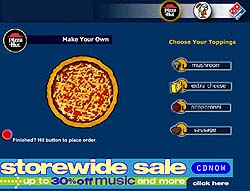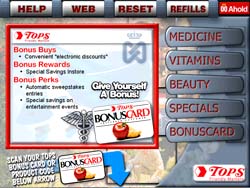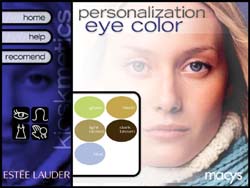Article
St. Jones is Netplex's guardian angel
A veteran kiosk application designer with six years in the business, St. Jones' applications might work miracles in a tough business.
March 21, 2002
There's a new saint in the kiosk industry. St. Jones is his name (yes, it really is), and he's
 |
St. Jones writes divine kiosk applications. |
Whether or not this particular saint performs kiosk miracles is a matter not yet settled, but his technological imagination is nothing short of divine.
In his year at Netplex, St. Jones and his design team, consultants Leonard Gambrell, Lawrence Rouse and Rigoberto Douglas, have developed two kiosk applications, a baby gift registry and a cosmetics application called Kioskmetics. Both are being tested in Macy's department stores, a subsidiary of Federated Department Stores Inc.
"My job is to come up with a concept and make it viable, meaning how we can get our return on investment, and then pitch it to clients," St. Jones said.
Design dogma
St. Jones rejects custom kiosk tools, preferring to design his applications using Macromedia's Director and Authorware software.
"I've seen so many kiosks that basically operate Web sites, and that's wrong," he said. "The biggest mistake I see is that many designers are using the kiosk as a PC. It is not a PC. It should not be a PC. But when you put a mouse and a keyboard with it, it becomes a PC.
"A kiosk should be very graphic intensive," St. Jones said. "It should have a touchscreen, no buttons and no text. It needs to be quick. It needs to deliver something to the client after the third click. The best example of the way a kiosk should run is the ATM. It's easy to use and it gives you something right away. The customer should get something before they are asked for their name, address, phone number and all that other information.
"Using a kiosk should be faster and easier than talking to a salesperson. A customer should spend no more than three minutes at the kiosk. And anybody should be able to approach it and use it. Your grandmother should be able to approach the kiosk and use it."
St. Jones says the number of kiosk users will continue to grow "thanks in large part to the Internet. At first, people were afraid to approach the kiosk because they didn't know how to use it and they were too embarrassed. Now people do approach it. They've used the Internet and see how easy it is, so they figure the kiosk must be easy, too. So they approach it and, depending on what they see on the screen, decide to stay or walk away."
To make sure the customer stays, St. Jones favors an attract loop, a promotional video clip that plays when customers are not using the kiosk.
"That brings them closer to the kiosk," he said. "It either asks you what you are looking for or has you scan something in, something to put the user into action."
Veteran Designer
St. Jones was born in Kittery, Maine, but grew up in Panama. He said he moved to Miami when the U.S. invaded Panama in 1989. He holds a degree in Commercial Interior Design from the University of Panama.
"That's where my affinity for retail comes from," he said.
Before coming to Netplex, Jones designed kiosk applications for five years at Miller Zell in Atlanta. His applications included two for a national video rental company: a kiosk that
 |
Part of a screen from the TakeOutMovie application. On this screen, customers can order toppings for their pizza. |
He also prototyped a kiosk that makes recommendations for vitamin supplements. It's being tested in three Tops Pharmacies in Rochester, N.Y.
"These are the fun ones," Jones said.
Creating ROI
Asked whether any of his applications had made it past the pilot stage, Jones said no, but explained that economic conditions were making retailers cautious (see "Kiosk companies feeling effects of slowdown" and "ROI: A perfectly imperfect model" ).
"A rollout is very expensive," the designer said. "Our applications are well received. Most
 |
Tops Pharmacies is testing this application that tells customers about vitamin supplements. |
One problem is meeting the ever-elusive return on investment (ROI).
"They're (retailers) looking for an 18 month ROI. No matter how fantastic the application is, if the application does not return an ROI in 18 months, it is not a viable project," Jones said.
Jones' research during the pilot is designed to test the ROI return. He said the video trailer application was a close call.
"Results were pretty good, but the return is about eight percent and we were looking to get 12 percent."
You'll look like an angel
Perhaps none of Jones' applications are more ambitious than his latest creation: Kioskmetics. The patent-pending Kioskmetics machine, which will be piloted by Macy's, just might revolutionize the cosmetics industry's approach to customer service.
The kiosk, designed to save consumers time by eliminating the sales rep, will offer information and advice on the purchase of cosmetics. The machine will scan the customer's
 |
Kioskmetics at work. |
"Based on that information, it then recommends the cosmetic products that best match you," Jones said.
Jones is recommending that Macy's use the NCR 7401 Web kiosk to power the Kioskmetics application.
Trials and errors
There are plenty of bugs to be worked out before the machine hits the market, of course, but St. Jones doesn't mind the trial and error process. The important thing, he insists, is to get it right.
"It takes me about three months to design a good application, but a lot of that is time learning about the product," he said. "Like with cosmetics, I knew nothing about cosmetics. I don't use cosmetics, so I needed a focus group of women. That focus group told us what we needed to know, what we needed to do. So now I can talk intelligently about cosmetics and can design a cosmetics kiosk."
St. Jones plans to debut the Kioskmetics prototype in October. If all goes well, the
 |
The prototype Kioskmetics display is powered by an NCR 7401 Web kiosk. |
"With Macy's we're expecting 120 kiosks," the crack designer said. "That could be up to 600 in about a year from now."
According to Macy's, however, it is too soon to toss around such numbers.
"We are in preliminary discussions, (but) we don't have an implementation plan yet," said Ben Diss, director of information systems at Macy's East in New York City. "If they can (roll it out in January) that'll be great."
Diss said Macy's has yet to do an extensive market analysis and therefore does not know what percentage of customers will use Kioskmetics and what products the machine will tout.
Nevertheless, he said, "We're anxious about it. We think it's exciting technology. We think it would be a useful machine to the customer, to show them how the product would be a benefit to them. We're just real preliminary. We haven't gone far enough to say what products will and won't be offered on it."
Revenue makeover
According to Jones, five percent of customers in traditional brick and mortar retail stores use kiosks. Of that small amount, two percent actually make a purchase. The average kiosk sale is $12, but the average cosmetics transaction is $36. It's the latter figure the designer is targeting.
For Kioskmetics to generate that kind of revenue, however, the machine will have to perform flawlessly. That's a promise Jones is confident he can deliver. It's his proactive, empowering approach that Macy's believes will make Kioskmetics a home run with its clients.
"I think it's better than a Web site because you're in the store and you're able to close that sale immediately," said Diss. "I believe in the technology. It'll tell you immediately what products are best for you for different uses. And it will only tell you about the products that you can actually buy right then. You can walk right over to the open counter, pick it up yourself, and go buy it.
"We think it will attract sales from people who are reluctant to speak with a cosmetics consultant. We think that it will attract a market segment that it's difficult to find the right makeup for."







